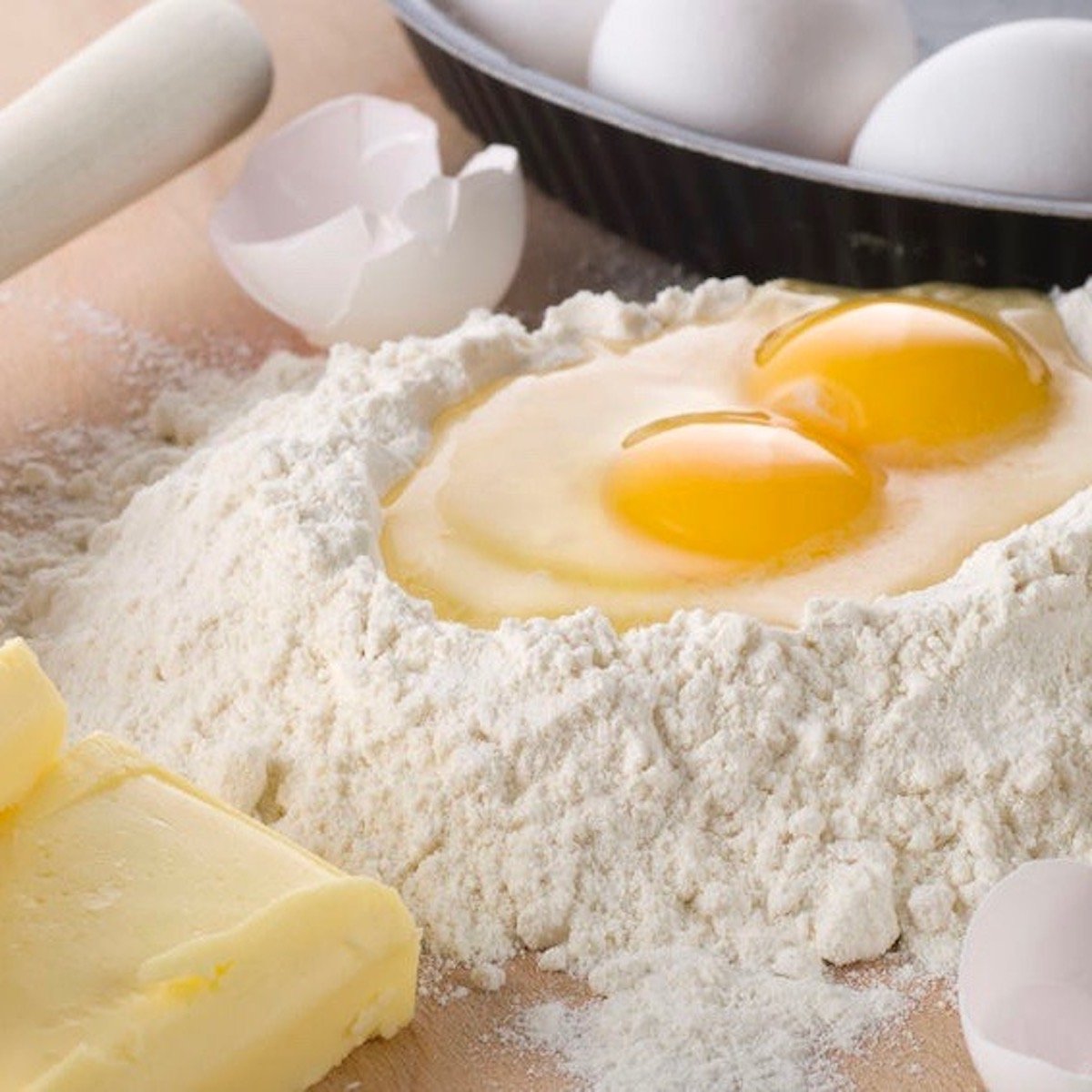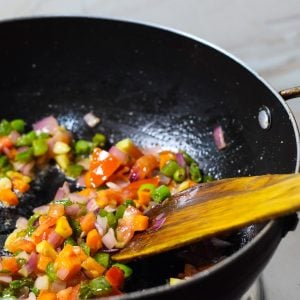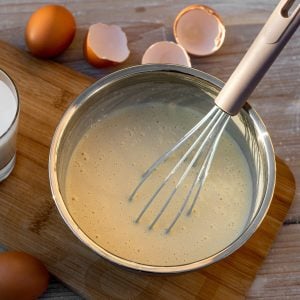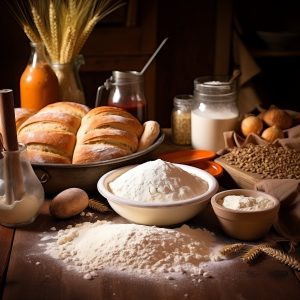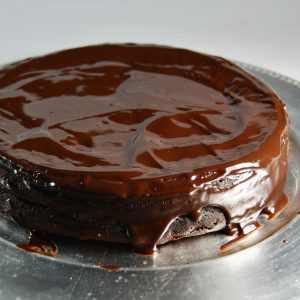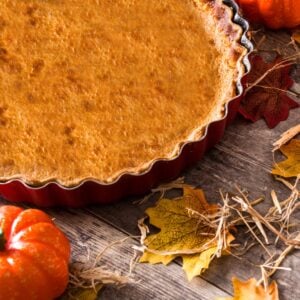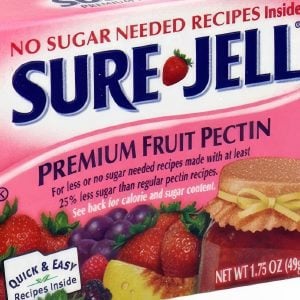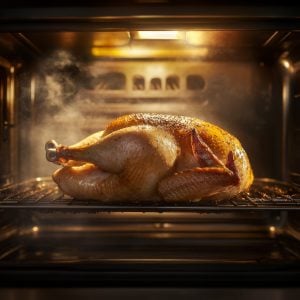How to Achieve Great Baking Results from Proper Mixing Techniques
I am not much of a baker so I asked my friend Chef Jenni, a great baker and even better educator, to explain in more detail the different mixing techniques for ingredients to come up with the best baking results possible.
It’s important to first understand how individual ingredients function in the baking process so I urge you to first read Bread Making Ingredients and then come back here to learn how to mix them all together.
Because Chef Jenni describes some of these techniques in such incredible detail, I will post the the Two-Stage Method and the Egg Foam Method as separate posts.
Ingredient Temperatures
One of the most important things to remember about all of these methods, except the biscuit method, is that all ingredients should be at or near cool room temperature, or about 68-70 degrees, F. Having all of your ingredients at the same temperature will help to keep solid fats and proteins plastic (more “stretchy”) so they can expand to their full potential.
- If your proteins (eggs, generally) are too cold, it will take longer to incorporate them or to whip them into a foam.
- If your fat is too cold, it won’t be plastic enough to allow maximum air incorporation.
- If your fat is too warm, it will lose its plasticity as well, so make sure that your fat is soft and moldable, kind of like Play-Doh.
- It shouldn’t be so soft that you can run your finger through it and leave a furrow.
- It should be malleable, not melty.
Creaming Method
Having the fat and eggs at cool room temperature are particularly vital in the creaming method. In this method, fat is creamed with sugar, creating minute tears or pockets in the fat where bubbles can form and expand. Thorough creaming is essential for maximum pocket formation (new, technical term) and to make sure that the fat is evenly distributed.
The next ingredients that we add in the creaming method is egg. You’ve worked so hard to cream the fat and sugar until it is creamy or fluffy (depending upon the recipe). What do you think will happen if you dump 39 degree eggs on top of the creamed fat?
I’ll tell you—your plastic fat will re-solidify. It will be harder to achieve a homogenous batter or dough, and the rise will be impeded. Please, please, please don’t let this happen to you. Have your ingredients at cool room temperature.
The creaming method is used to make many cookies as well as cakes. I don’t know about you, but I notice a distinct textural difference between cookies and cakes. Cakes have a lighter, airier texture than do cookies.
Granted, most cakes contain more liquid than do cookies, and some of this textural difference can be attributed to the increased amount of liquid ingredients. Some of this difference is due to differences in creaming, though.
To achieve a chewy cookie, creaming should be done on low speed to achieve a soft fat/sugar paste. As soon as you no longer see distinct bits of fat and sugar in the mixing bowl, you’re done. To achieve a lighter cookie with a more cake-like texture (or to make a cake), creaming should start slowly and finish on medium speed.
The end result should be light and fluffy, not dense and paste-like as for chewy cookies. The longer creaming period allows for more air pockets to be formed in the fat, ensuring optimum leavening.
The Muffin Method
The muffin method is a less technical method of mixing ingredients. You still need to make sure that your ingredients are at room temperature, but as long as you remember to use a very light hand when mixing the wet ingredients into the dry ingredients, you should have success with this method.
An easy way to check to see if you’ve mixed with a light enough hand is to break a baked muffin apart and look at the crumb. If you see long tunnels in the crumb, you mixed too enthusiastically.
These tunnels are formed when air bubbles (created by chemical leaveners, in this case) rise up through a batter with lots of gluten in it. Remember—flour + liquid + agitation=gluten.
One other item to consider when using the muffin method is that there is no “pre-leavening,” if you will. By this, I mean that there are no small pockets formed with sugar and fat as in the creaming method.
In the muffin method, the fat is generally introduced with the wet ingredients in a liquid state (either oil or melted butter).
This being the case, it is very important to sift your dry ingredients together very well. This will do two things for your finished product:
- Chemical leaveners will be evenly distributed so that your final product will have an even rise.
- Sifting aerates the dry ingredients, providing very tiny air pockets for the chemical leaveners to expand upon.
If you just dump all your dry ingredients without thoroughly mixing them and aerating them, you will end up with lumpy, lopsided muffins.
Mixing Techniques for the Biscuit Method
The biscuit method is very similar to the muffin method with one notable exception. Rather than melting the fat (or using oil) and adding it to the dry ingredients along with the liquid, the fat is always introduced cold (even frozen) in the biscuit method.
Cold fat is rubbed in or cut into the well-mixed dry ingredients before any of the liquid is added. What does this one change in method mean for the finished product?
In both methods, the liquid is mixed in gently, so the main difference between the two is the manner in which the fat is incorporated. Remember, fat that coats flour inhibits gluten formation. Knowing that, you can bet that a procedure that requires you to cut the fat in with the flour before adding liquid will result in a more tender end product.
And biscuits are generally much more tender than muffins! Another distinction between the two is the temperature at which the fat is incorporated. In most other methods, all ingredients should be at cool room temperature.
In the biscuit method, however, the fat and the liquid are both cold. Very cold or partially frozen butter is often specified in biscuits and pie crusts, as is ice water. The reason for this becomes obvious, once you understand ingredient function. Cold fat does not readily distribute in a dough or batter.
Whereas in the creaming method, we want the fat evenly distributed throughout the batter, in the biscuit method, while we want the fat to coat some of the flour, we want the rest of it to be in small, discrete pieces suspended throughout. Adding ice water or another very cold liquid helps ensure that the butter stays cold and solid during any additional mixing, since mixing creates friction which, in turn, creates heat.
If the fat in question is butter, in the baking process, the water in the butter (most butter in the US is about 18% water) heats and turns to steam, assisting in leavening. The fat melts invitingly in little pools, tenderizing the surrounding dough and giving items made with the biscuit method a wonderful, buttery taste.
When using shortening, which is 100% fat, there is no steam assist in the rise, but all the fat will melt and tenderize the surrounding dough.
What if I want Flaky Biscuits?
This is a valid question, and here’s how to achieve a flaky biscuit.
First, I’ll tell you how, and then I will point out the chemistry behind the method. To make a flaky biscuit, use all butter, and leave the fat in larger pieces — 1/3 to ½ inch chunks is ideal. Once you bring your dough together, pat it out into a ½” thick rectangle on a lightly floured board.
With the help of a bench scraper, fold the dough in half. With a rolling pin, roll out the resulting thick rectangle to the original ½”. Turn the dough, and fold and roll again.
Do this a total of six times. Then, cut and bake your biscuits at a fairly high temperature—400 degrees, F, or so. They will rise up high and flaky, especially if you are using a convection oven.
How does this technique result in a flaky biscuit?
A flaky biscuit is comprised of thin sheets of dough stacked on top of each other with lots of large flakes of butter throughout. When you cut through the dough that you’ve made with this technique, you will be able to see the horizontal layers as well as the thin sheets of butter (the chunks of butter that you originally started with have been rolled into sheets with the rolling pin).
You will notice that as you roll and fold, the dough will become more and more uniform in texture (it will start out very “shaggy”), and it will also become more difficult to roll. This is because all of the rolling that you are doing is developing the gluten in the flour (flour + liquid + agitation = gluten).
In this case, the rolling provides the agitation. Depending on the protein content of your flour, you will get more or less gluten development. I recommend using an all purpose flour for flaky biscuits and a low protein flour like cake flour or White Lily brand for making tender biscuits.
At the same time that you are activating the gluten, you are also rolling the butter out into sheets. In the oven, steam and melting fat will act to lift and separate the layers. Same recipe, two techniques, two distinctly different biscuits. Isn’t science fun?!

